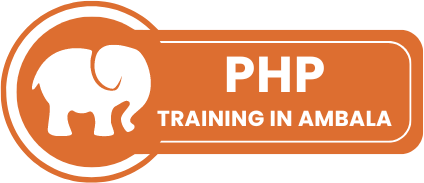| Tags | Description | Syntax |
| !DOCTYPE html | According to the HTML specification or standards, every HTML document requires a document type declaration. | < !DOCTYPE html > |
| abbreviation | The abbreviation tag in HTML is used to define the abbreviation or short form of an element. | <abbr title=” “> … </abbr> |
| acronym | The acronym tag in HTML is used to define the acronym that gives useful information to browsers, translation systems, and search engines. | <acronym title=” “> … </acronym> |
| address | The address tag in HTML indicates the contact information of a person or an organization. | <address> … </address> |
| anchor | The anchor tag in HTML is used to create a hyperlink on the webpage. | <a herf=” “> …</a> |
| area | This area tag is used in an HTML document to map a portion of an image to make it clickable by the end-user. | <area> |
| article | The <article> tag is one of the new sectioning elements in HTML5. The tag is used to represent an article. | <article>..</article> |
| audio | It is a useful tag if you want to add audio such as songs, interviews, etc. on your webpage. | <audio>..</audio> |
| big | The big tag in HTML is used to increase the selected text size by one larger than the surrounding text. In HTML 5. | <big> Contents… </big> |
| blockquote | The blockquote tag in HTML is used to display the long quotations (a section that is quoted from another source). | <blockquote> Contents… </blockquote> |
| body | The body tag in HTML is used to define the main content present inside an HTML page. | <body> Contents… </body> |
| bold | The bold tag in HTML is used to specify the bold text without any extra importance. | <b>… </b> |
| break | The break tag inserts a single carriage return or breaks in the document. This element has no end tag. | <br> |
| button | The button tag in HTML is used to define the clickable button. <button> tag is used to submit the content. | <button type = “button”> |
| caption | The caption tag is used to specify the caption of a table. Only one caption can be specified for one table. | <caption align = “value”></caption> |
| canvas | It can be used to draw paths, boxes, texts, gradients, and add images. | <canvas id = “script”> Contents</canvas> |
| center | The center tag in HTML is used to set the alignment of text in the center. Not supported in HTML5. | <center> Contents.</center> |
| cite | The cite tag in HTML is used to define the title of a work. It displays the text in italic format. | <cite>Content</cite> |
| code | The code tag in HTML is used to define the piece of computer code. | <code>Contents</code> |
| colgroup | It is useful for applying styles to entire columns, instead of repeating the styles for each column, and for each row | <colgroup> Column lists </colgroup> |
| column | The col tag in HTML is used to set the column properties for each column within a colgroup tag. | <col attribute = “value”> |
| comment | The comment tag is used to insert comments in the HTML code. | <!–…–> |
| data | The data element gives an address to a given content with a machine-readable translator. | <data value=””> Contents </data> |
| dd | The dd tag is used to denote the description or definition of an item in a description list. | <dd>Contents</dd> |
| delete | Delete tag is used to mark a portion of text which has been deleted from the document. | <del>Contents</del> |
| details | This tag is used to create an interactive widget that the user can open or close. | <details>Contents</details> |
| div | The div tag is used in HTML to make divisions of content in the web page (text, images, header, footer, navigation bar, etc). | <div>Content</div> |
| dl | The dl tag in HTML is used to represent the description list. In HTML4.1, it defines definition list and in HTML5, it defines description list. | <dl> Contents… </dl> |
| dt | The dt tag in HTML is used to specify the description list. It is used inside the <dl> element. It is usually followed by a <dd> tag. | <dt> Content… </dt> |
| embed | It is used as a container for embedding plug-ins such as flash animations. | <embed attributes> |
| fieldset | The fieldset tag in HTML5 is used to make a group of related elements in the form, and it creates the box over the elements. | <fieldset>Contents</fieldset> |
| figcaption | The figurecaption tag in HTML is used to set a caption to the figure element in a document. This tag is new in HTML5. | <figcaption> Figure caption </figcaption> |
| figure | The figure tag in HTML is used to add self-contained content like illustrations, diagrams, photos, or codes listed in a document. | <figure> Image content… </figure> |
| font | The font tag in HTML plays an important role in the web page to create an attractive and readable web page. | <font attribute = “value”> Content </font> |
| footer | The footer tag in HTML is used to define a footer of HTML document. This section contains the footer information. | <footer> … </footer> |
| form | This form is used basically for the registration process, logging into your profile on a website or creating your profile on a website, etc … | <form> Form Content… </form> |
| head | The head tag in HTML is used to define the head portion of the document which contains information related to the document. | <head>…</head> |
| header | The header tag is used to contain the information related to the title and heading of the related content. | <header> …</header> |
| heading | An HTML heading tag is used to define the headings of a page. These 6 heading elements are h1, h2, h3, h4, h5, and h6; with h1 being the highest level and h6 being the least. | <h1>Heading1</h1><h2>Heading2</h2> |
| hgroup | The hgroup tag in HTML is used to wrap one or more heading elements from <h1> to <h6>, such as the headings and sub-headings. | <hgroup> … </hgroup> |
| hr | The hr tag in HTML stands for horizontal rule and is used to insert a horizontal rule. | <hr> |
| html | The html tag in HTML is used to define the root of HTML and XHTML documents. | <html> Contents </html> |
| Iframes | The iframe tag defines a rectangular region within the document in which the browser can display a separate document. | <iframe src=”URL” title=”description”></iframe> |
| image | HTML Image, how to add the image in HTML. In earlier times, the web pages only contains textual content, which made them appear quite boring and uninteresting. | <img src=”url” alt=”some_text” width=”” height=””> |
| input | The input tag is used within < form> element to declare input controls that allow users to input data. | <input type = “value” …. /> |
| italic | This tag is generally used to display a technical term, phrase, the important word in a different language. | <i> Contents</i> |
| label | The label tag in HTML is used to provide a usability improvement for mouse users. | <label> form content… </label> |
| legend | The legend tag is used to define the title for the child contents. The legend elements are the parent element. | <legend> Text </legend> |
| list | The list tag in HTML is used to define the list item in an HTML document. It is used within an Ordered List <ol> or Unordered List <ul>. | <li> List Items </li> |
| main | The main tag is used to give the main information of a document. The content inside the <main> element should be unique for the document. | <main>Coontents</main> |
| mark | The mark tag in HTML is used to define the marked text. It is used to highlight the part of the text in a paragraph. | <mark> Contents… </mark> |
| marquee | The marquee tag in HTML is used to create scrolling text or images on a webpage. It scrolls either horizontally or vertically. | <marquee>Contents</marquee> |
| meta | The meta tag is regularly used to give watchwords, portrayals, author data, and other metadata that might be utilized by the program to deliver the document accurately or in simple words, it provides important information about a document. | <meta attribute-name=”value”> |
| nav | The nav tag is used for declaring the navigational section in HTML documents. Websites typically have sections dedicated to navigational links, which enables users to navigate the site. | <nav> Links… </nav> |
| optgroup | This tag is used to create a group of the same category options in a drop-down list. | <optgroup>…</optgroup> |
| option | The option tag in HTML is used to choose an option from a Drop-Down menu. | <option> Contents… </option> |
| output | The output tag in HTML is used to represent the result of a calculation performed by the client-side script such as JavaScript. | <output> Results… </output> |
| paragraphs | The <p> tag in HTML defines a paragraph. These have both opening and closing tags. | <p> Content </p> |
| phrase | In HTML, phrase tag is used to indicate the structural meaning of a block of text. | <em> Text Content </em> |
| pre | The pre tag in HTML is used to define the block of preformatted text which preserves the text spaces. | <pre> Contents… </pre> |
| progress | It is used to represent the progress of a task. It is also defined how much work is done and how much is left to download a thing. | <progress attributes…> </progress> |
| q | The q tag is a standard quotation tag and is used for short quotations. | <q> Contents… </q> |
| script | The script tag in HTML is used to define the client-side script. | <script> Script Contents… </script> |
| section | Section tag defines the section of documents such as chapters, headers, footers, or any other sections. | <section> Section Contents </section> |
| small | The small tag in HTML is used to set small font sizes. It decreases the font size by one size (from medium to small, from x-large to large). | <small> Contents… </small> |
| source | The source tag in HTML is used to attach multimedia files like audio, video, and pictures. | <source src=”” type=””> </source> |
| span | The HTML span element is a generic inline container for inline elements and content. | <span class=””>Some Text</span> |
| strike | HTML strike tag, along with understanding its implementation through the example. The <strike> tag defines a strike or line through Text. | <strike> Contents </strike> |
| strong | The strong tag in HTML is the parsed tag and is used to show the importance of the text. Make that text bold. | <strong> Contents… </strong> |
| style | The style tag in HTML helps us to design the web page. | <tagname style=”property:value;”> |
| sub and sup Tags | · The sub-tag is used to add a subscript text to the HTML document.
· The <sup> tag is used to add superscript text to the HTML document. |
<sub>subscript text</sub><sup>superscript text</sup> |
| summary | The <summary> tag in HTML is used to define a summary for the <details> element. | <summary> Content </summary> |
| svg | HTML SVG Basics, & their implementation through the examples. SVG stands for Scalable Vector Graphics. | <svg height=”” width=””> |
| table | HTML Table, various ways to implement it, & will also understand its usage through the examples. HTML Table is an arrangement of data in rows and columns, or possibly in a more complex structure. | <table>… </table> |
| tbody | The tbody tag in HTML is used to make a group of the same type of content of the body element. | <tbody> // Table contents </tbody> |
| td | The table data tag is used to define a standard cell in an HTML table. | <td>……..</td> |
| tfoot | This tag is used in HTML table with header and body which is known as “thead” and “tbody”. | <tfoot> // Table footer contents… </tfoot> |
| th | The table header tag in HTML is used to set the header cell of a table. Two types of cells in the HTML table Header & Standard. | <th> Contents… </th> |
| thead | This tag is used in HTML tables as head and body which are known as thead and tbody. | <thead>Table head Contents…</thead> |
| time | The time tag is used to display the human-readable date/time. It can also be used to encode dates and times in a machine-readable form. | <time attribute> Time… </time> |
| title | The title tag in HTML is used to define the title of HTML document. It sets the title in the browser toolbar. | <title> Title name </title> |
| tr | The table row tag is used to define a row in an HTML table. The <tr> element contains multiple <th> or <td> elements. | <tr>…..</tr> |
| tt | The tt tag is the abbreviation of teletype text. This tag is depreciated from HTML 5. It was used for marking Keyboard input. | <tt> Contents… </tt> |
| underline | The underline tag in HTML stands for underline, and it’s used to underline the text enclosed within the <u> tag. | <u> Contents… </u> |
| video | HTML5 Video, along with knowing the different ways to add the videos to the HTML page. | <video src=”” controls> </video> |
| xmp | The XMP tag is used to create any content in letter format. | <xmp> statement </xmp> |
Comment code or add instructions
<!– Write your comments here –>









